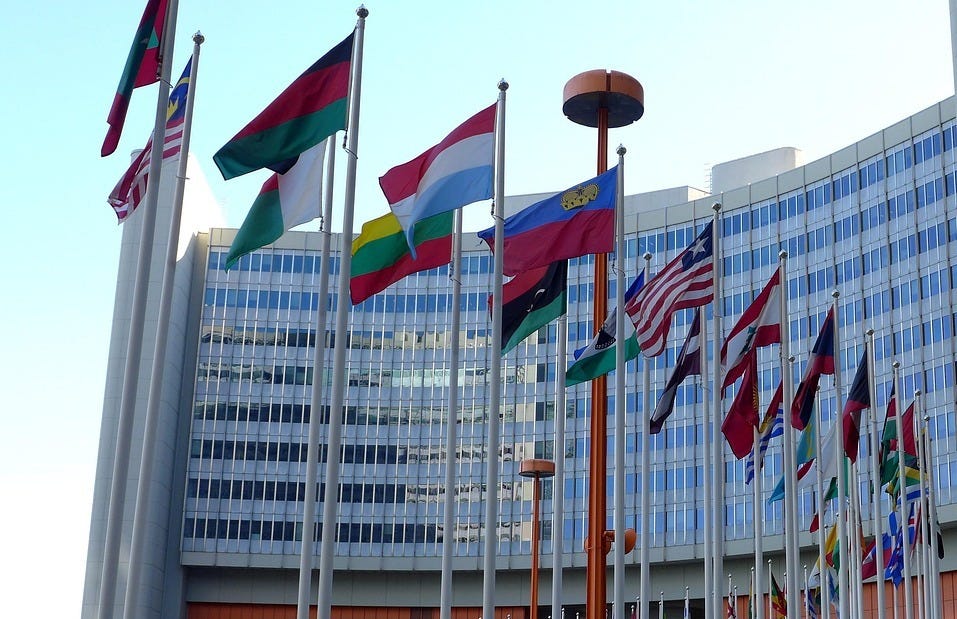How Fusion Can be a Diplomatic Tool
Abdus Saboor Shaik
In this contribution, PhD researcher Abdus Saboor Shaik discusses how he thinks fusion can be used as a tool to facilitate global collaboration. He highlights how fusion technology development offers the opportunity to share knowledge across borders, shape sustainable policy initiatives and address the global energy crisis, despite geopolitical tensions.
—
The standard of life in any society is directly linked to energy. Industrial output, transportation networks, communications infrastructure, and national defence all depend on secure and affordable power.
Nations with reliable energy supplies achieve stability and growth, while those without remain exposed to economic strain and external influence.
Since the Industrial Revolution, rising energy use has driven economic progress but also produced the emissions behind climate change. This has made energy a central topic in global diplomacy.
Fusion offers a different trajectory.
Fusion’s Diplomatic Potential
In practice, fusion avoids the political weight attached to fission.
It produces energy by combining light atomic nuclei, so leaves only short-lived waste and carries no danger of runaway reactions. The process does not depend on uranium enrichment or plutonium stockpiles which poses challenges for security and proliferation.
It also creates more room for collaboration across borders, through supply chains, research diversity and climate policy, as noted by the International Atomic Energy Agency.
ITER: A Test of Global Collaboration
The most visible example of fusion’s potential is ITER in southern France.
Europe, the United States, China, India, Japan, South Korea, and Russia are all invested in building the largest fusion experiment in history.
Shipments move through supply chains, components are assembled to shared standards, and research teams maintain their joint work.
Even after the invasion of Ukraine, Russia has remained a member of the ITER Organisation, with obligations to deliver components and provide financial contribution. This a situation the European Parliament has noted, but remains a pathway for engagement.
Few international projects have held together under comparable strain.
Beyond the Superpowers
Other examples reinforce the pattern. China’s EAST reactor has tested new plasma configurations with contributions from American and European partners.
Japan’s JT-60SA project, built with European support, stands as a continuation of decades of joint work on advanced reactors.
Countries with smaller nuclear programs have also gained a role. For example, Brazil has supplied diagnostic systems, while Kazakhstan has contributed materials expertise.
The partnerships formed in these projects thus stretch far beyond the usual group of nuclear powers.
Multidisciplinary Opportunities
Fusion draws strength from the variety of its research fields. Plasma science, superconducting magnets, cryogenics, advanced materials, and control systems all demand specialized knowledge.
Each becomes a door through which universities, laboratories, and industries can join.
Where fission has often been guarded by security concerns and restricted fuel cycles, fusion has proven more open to wide participation, a point stressed by the World Nuclear Association.
Creating Shared Standards and Regulation
The framework of rules and regulations for fusion is still taking shape and will be reinforced by global cooperation and alignment.
Existing projects already depend on common testing protocols and quality benchmarks. Safety procedures, licensing systems, and waste management are debated in parallel with technical progress.
International agencies, like the OECD Nuclear Energy Agency, are urging governments to move toward harmonisation. Aligning national regulations, endorsing shared codes and standards, and even partial acceptance of licensing reviews conducted abroad could improve the ability for all states to benefit from research and innovation in fusion technologies.
Strengthening Climate Policy
The diplomatic value also rests on climate policy.
Fusion is not expected to deliver power to the grid soon, but international cooperation shows a collective effort toward low-carbon energy.
It strengthens domestic industries and trains new generations of scientists and engineers while signalling commitment to long-term decarbonization.
The technology has entered the agenda of the G20 and the United Nations climate process, connecting energy transition goals with opportunities for scientific collaboration.
Sustaining Cooperation
Energy has often divided states and set the stage for conflict. Fusion is emerging as one of the few technologies that sustains cooperation even in an atmosphere of rivalry.
The record of ITER, the links maintained through Japanese and Chinese projects, and the participation of countries outside the traditional nuclear circle show how resilient those networks can be.
In an international system defined by mistrust, fusion remains one of the rare areas where connections grow stronger rather than weaker.
—
Abdus Saboor Shaik is a PhD student in Nuclear Materials Research at Imperial College London where his work focuses on modeling the interaction between creep and irradiation damage in fusion reactor materials. He also serves as an executive committee member of the Arab Fusion Energy Programme (AFEP), where he collaborates with fusion experts from international institutions to promote the adoption of fusion energy in the Arab world, an advisor to FusionX Group, and is an active member in the Fusion Industry Association news team.
Connect with Abdus here.
Want to respond? Leave a comment below or get in touch to share your own contribution at hello@openfusioncollective.org
Disclaimer. The views expressed in this article are those of the author and do not necessarily reflect the views of the Open Fusion Collective.


